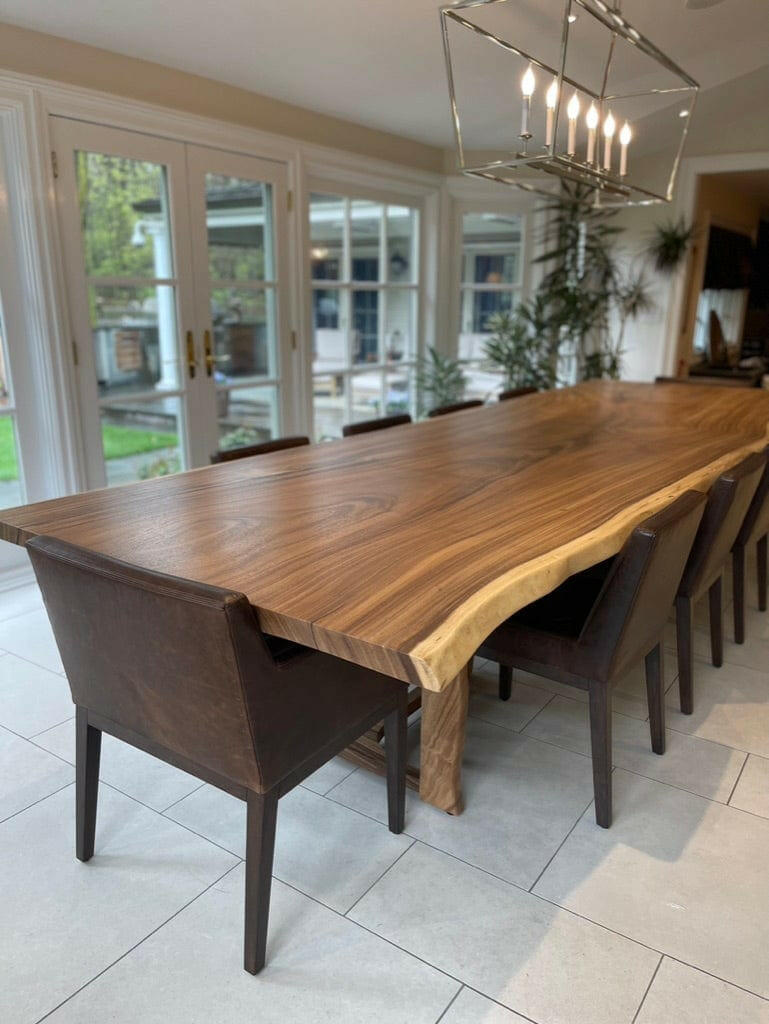A Thorough Check Out Table Leg Styles: Finding the Perfect Suit
Choosing the best dining table leg design is essential for both visual allure and useful functionality. Conventional four legs provide ageless elegance and security, while the pedestal base offers boosted legroom and a contemporary look. For those with larger tables, trestle legs ensure sturdy assistance, whereas barrette legs present a mid-century contemporary vibe with their minimal design. The x-shaped legs blend contemporary design with enhanced stability. Each of these alternatives brings distinct benefits, making the option greater than simply a matter of choice. Check out even more to uncover which design perfectly enhances your eating space and lifestyle.
Standard Four Legs
Among the different kinds of table leg designs, the standard four-leg style continues to be a timeless selection for many families. This traditional arrangement offers a harmonious mix of capability and visual appeals, making it a perennial fave. 4 legs offer well balanced assistance, guaranteeing the table stays secure and capable of birthing substantial weight. This is specifically helpful for homes that frequently organize huge celebrations or use their dining table for numerous functions, such as job or crafting.
From a visual point of view, the standard four-leg style can be conveniently adapted to various indoor styles. Whether crafted from timber, metal, or a mix of products, these legs can be intricately sculpted, smooth and minimalistic, or anything in between. Their versatility enables them to complement both rustic and contemporary setups seamlessly.
Moreover, the straightforward structure of the four-leg style facilitates simplicity of motion and positioning within a space. Unlike more facility bases, this style lessens blockages, providing adequate legroom for restaurants. In summary, the typical four-leg table leg design weds enduring elegance with functional functionality, making it an astute selection for those seeking both kind and function in their dining furnishings.
Stand Base
Frequently commemorated for its sophisticated and space-efficient layout, the stand base is a recognized alternative to the standard four-leg configuration in table leg styles. This distinctive base typically features a single main column supporting the table top, which can vary in form, from ornately sculpted timber to smooth, modern metal. One of the primary benefits of the stand base is its capacity to optimize legroom and seating flexibility. Without edge legs, diners are afforded higher freedom of movement, making it a suitable choice for round and oval tables that advertise more intimate and inclusive gatherings.
In addition, the stand base's central support can take care of significant weight, enabling using heavier table tops, such as marble or thick hardwood. This toughness combined with its aesthetic convenience makes the pedestal base a prominent choice in both typical and contemporary indoor settings. It can seamlessly integrate with numerous layout themes, from classic sophistication to minimalist modernity. In addition, the central column itself offers a canvas for elaborate layouts and artistic expressions, including an aspect of visual interest below the table. In recap, the pedestal base combines capability with design, making it an improved and sensible choice for diverse eating atmospheres.
Trestle Legs
Trestle legs give a robust and timeless foundation for dining tables, characterized by their horizontal cross-bracing and strong assistance beam of lights. Originating from medieval times, this style has actually developed yet retained its crucial framework, making it a perennial fave in both typical and contemporary setups. The central trestle light beam, typically supported by 2 or more vertical articles, my link supplies remarkable stability, enabling larger table sizes without the demand for added legs.
A substantial benefit of trestle leg tables is the ample legroom they offer. Unlike tables with four edge legs, the absence of blockages at the table's edges offers unobstructed space for chairs and restaurants, improving comfort and availability. This makes trestle tables optimal for accommodating bigger gatherings, whether in a dining-room or a banquet hall.
The visual convenience of trestle legs is notable. Readily available in a selection of products such as timber, steel, and composite, they can be ended up to match a vast array of indoor styles. From rustic farmhouse to sleek contemporary styles, trestle legs can be personalized to match specific tastes. Their long-lasting allure and practical benefits make trestle legs a compelling selection for those seeking both design and usefulness in their table.
Barrette Legs

The allure of hairpin legs depends on their simplicity and adaptability - dining room table legs. Offered in a series of materials, including steel and their website brass, they can be completed in numerous shades to enhance different interior designs. Whether coupled with a rustic wood tabletop or a contemporary glass surface area, barrette legs easily blend functionality with a touch of vintage appeal
Sturdiness is an additional noteworthy function of barrette legs. Regardless of their fragile appearance, these legs are engineered to birth considerable weight, guaranteeing the table remains stable and secure. Additionally, they are fairly simple to set up, making them a prominent selection for do it yourself fanatics and specialist furnishings manufacturers alike.
X-Shaped Legs

Constructed from materials such as steel, wood, or a mix of both, X-shaped legs can be tailored to match numerous layout preferences. Steel legs typically lend a sleek and industrial feeling, suitable for loft-style apartments and modern eating rooms. On the other hand, wood X-shaped legs use a warmer, much more rustic allure, appropriate for farmhouse or diverse interiors. The flexibility in products enables home owners to personalize their dining tables to much better fit their overall style system.
Furthermore, the engineering behind X-shaped legs guarantees also weight distribution, minimizing the danger of wobbling and enhancing toughness. This makes them particularly appropriate for larger dining tables that need added support. Fundamentally, X-shaped legs mix hop over to here functional engineering with modern-day aesthetics, making them an ageless option for diverse dining environments.
Conclusion
A comprehensive understanding of eating table leg designs discloses the unique qualities and advantages of each layout. Trestle legs make sure durable assistance for bigger tables, and barrette legs present a mid-century modern visual.